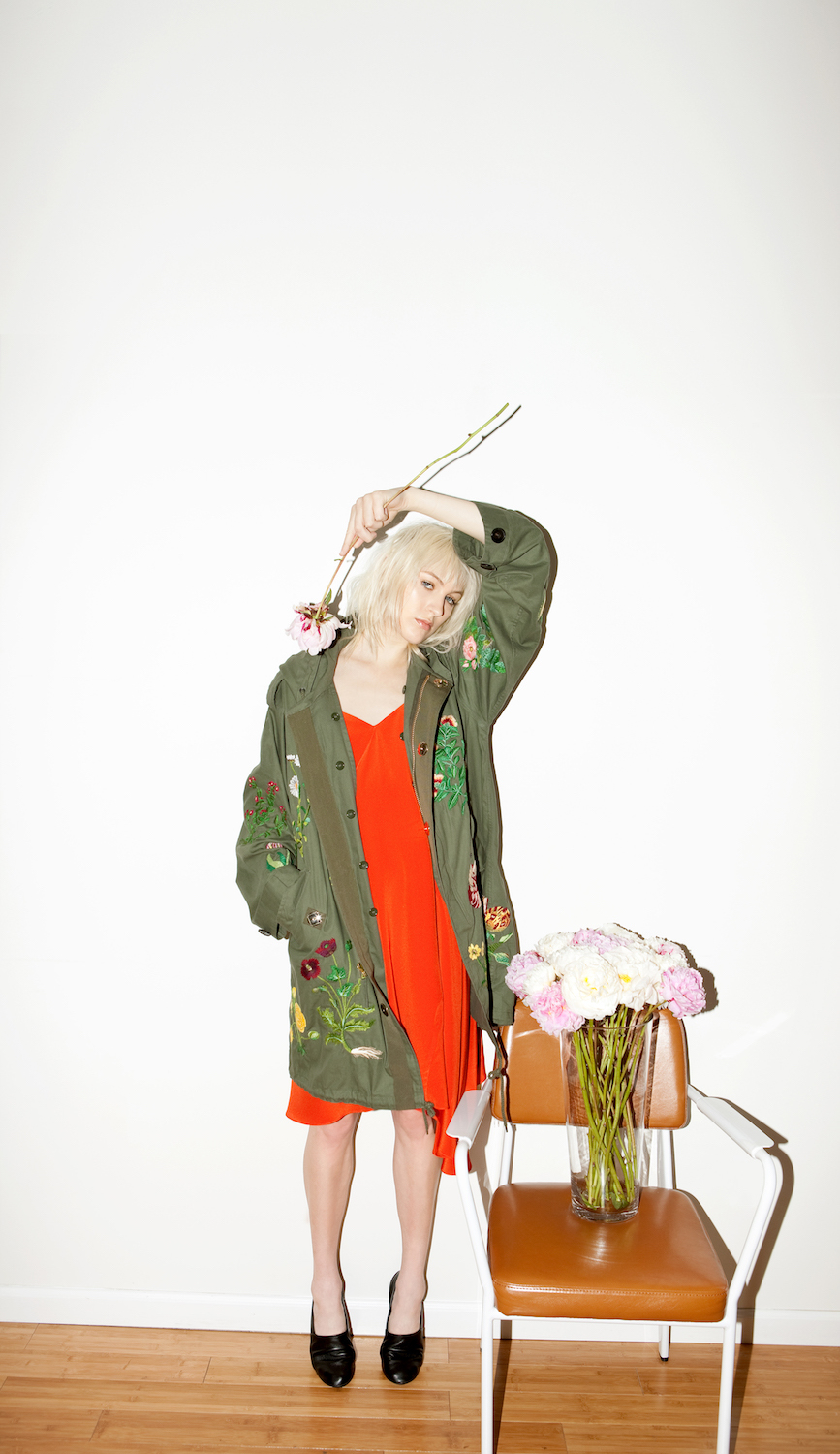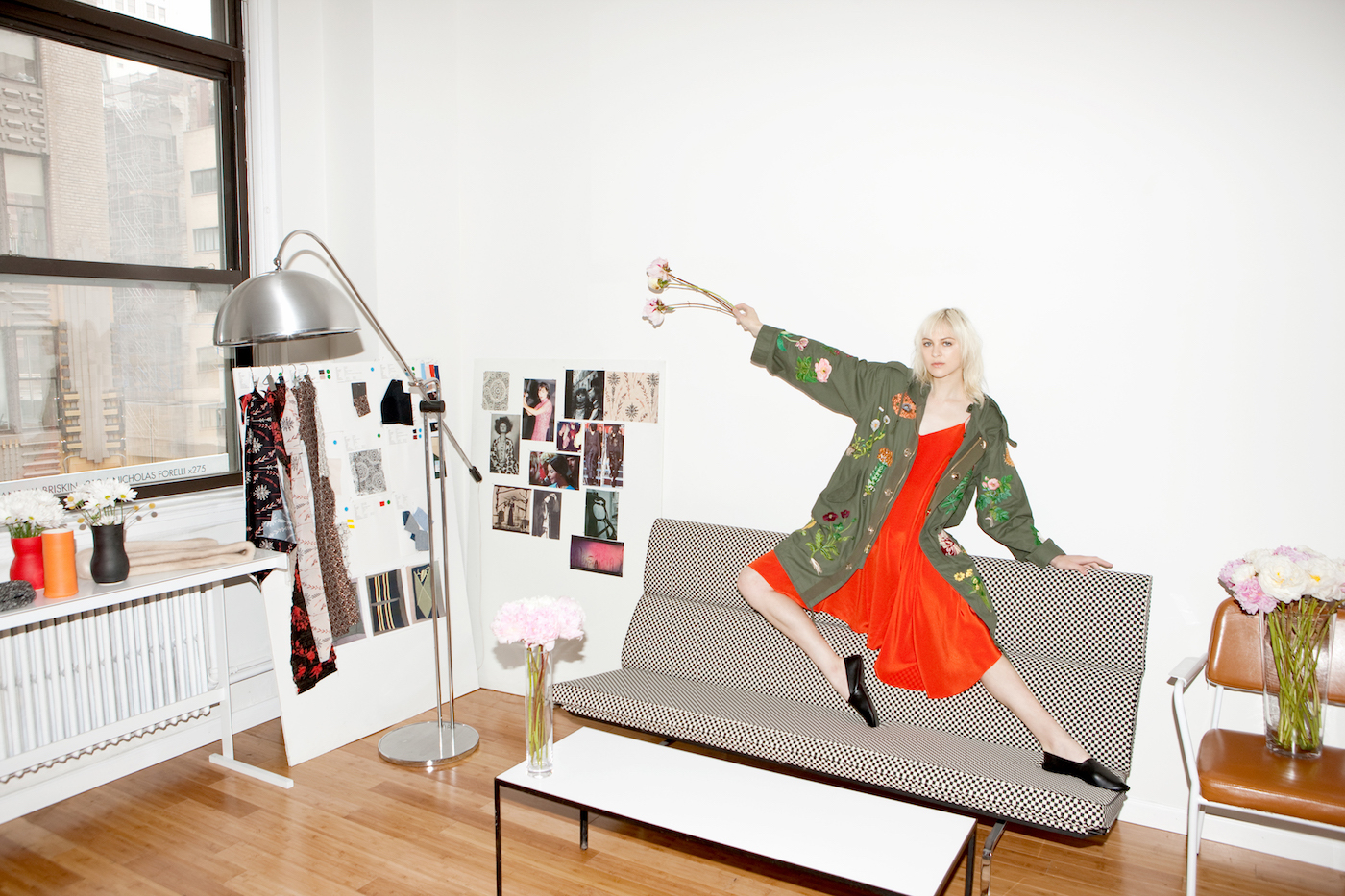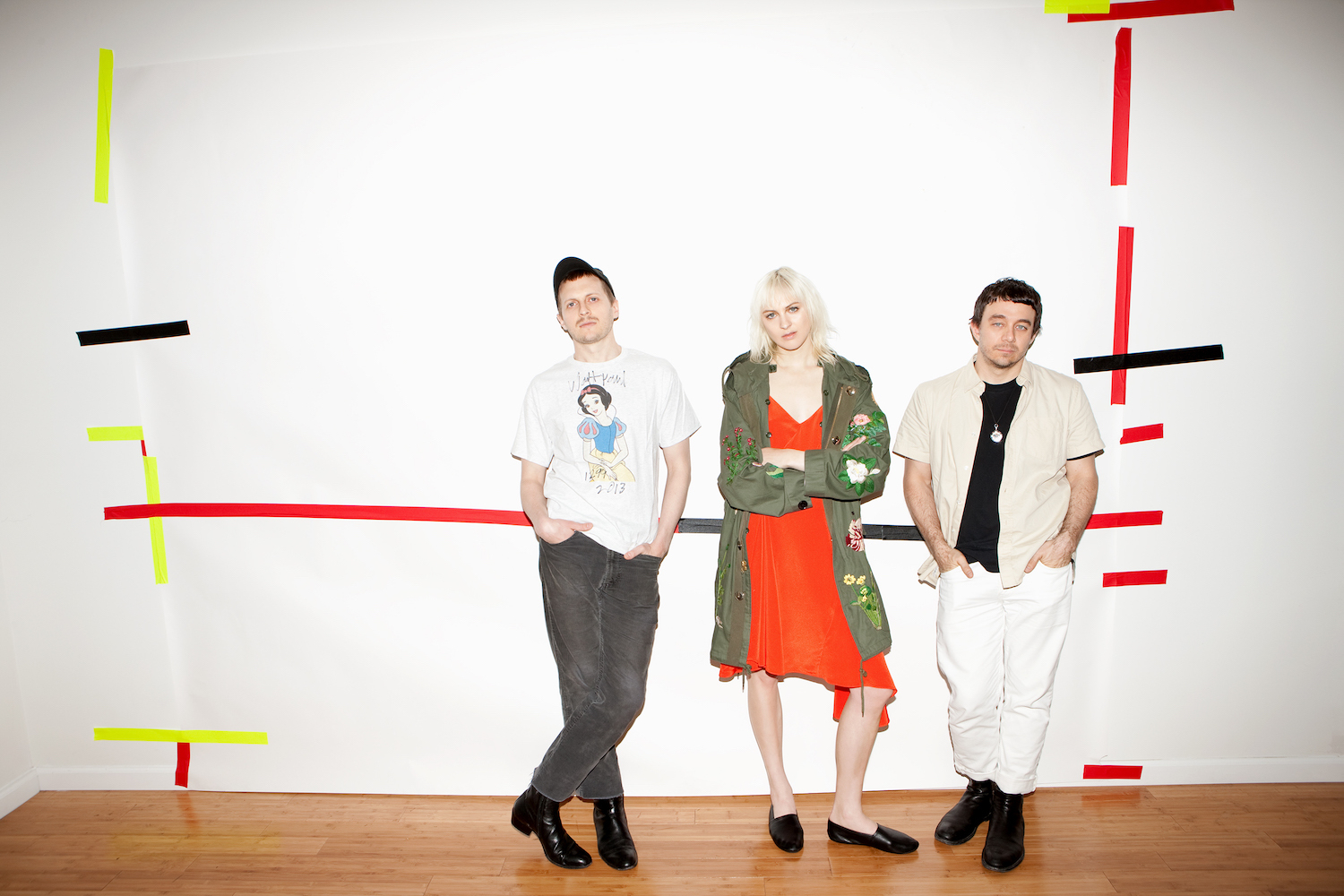To celebrate their resort 17 collection, which debuted yesterday at the exquisite Spencer House, Shane Gabier and Chris Peters teamed up with Farfetch to create a “see now, buy now” edit of the collection, which fashion fans could get their paws on immediately after the show. This is fast fashion at its finest.
“Shane and Chris are a great example of fresh and exciting design talent,” explains Farfetch’s Chief Marketing Officer, Stephanie Horton, “the intricate aesthetic and attention to detail in their pieces is faultless.” But what of the clothes? For their first resort runway show, entitled Harmonium which immediately calls to mind a sense of historic grandeur, the duo cast their net far and wide, fusing old world English heritage with the sumptuousness of pre-revolutionary Russia. Think Victorian blouses, antique style brooches, florals, ribbon, crochet and velvet. Particularly covetable were a range of khaki parkers dripping in jewels and delicate ankle boots decorated with silver stars that shimmered and sparkled as the models meandered their way through the iconic 18th-century mansion, to the sound of Christopher Owen’s haunting melodies. After the show we caught up with men of the moment, Creatures of the Wind, to find out how it all began.

Tell us a bit about yourselves, your background and how you met?
Shane: Well we both went to the School of the Art Institute in Chicago. We met after I started teaching. We started dating first and then started making things and, to cut a long story short, it just ultimately lead to these small projects that lead to larger projects which lead to our first full collection which was spring/summer 11.
How did being based originally in Chicago affect your brand identity? What was it about the city that inspired you?
Shane: I think it made us really resourceful because there’s not really a fashion community to speak of there, I mean on some level. So a lot of our first kind of ventures into collaborations were with friends who were artists or musicians and turning artwork in to prints or having songs written for short films that we did with other friends who were filmmakers. The brand has always been very collaborative but at that moment it was collaborative in this way that wasn’t totally fashion-centric because that was the community that was around us so we were kind of relying on to help build the idea of the brand.
How has moving to New York changed that?
Chris: I think it sort of made our understanding of how fashion works become a little bit more concrete. I feel like the collection got a bit more ‘real’ in terms of being like a company, it really allowed us to take control of our manufacturing, it really allowed us to build a design team, and it allowed us to flesh out the world we are trying to create.
What’s been your most significant moment so far?
Chris: Winning the Vogue Fashion Fund. It changed a lot of things for us. It sort of validates you in a way that nothing else really will.
How would you describe your creative process? Who does what?
Shane: Oh we both do everything.
Chris: Everything.
Shane: We both see everything through from beginning, from concept development to fabric sketches, patterns. We’re both involved across the board.
Chris: Across the board.
Shane: There are moments when we have to separate a little bit but we both ultimately make every decision together. Neither one of us has full power on their own.

Can you tell us a bit about the latest collection?
Chris: The latest collection is called Harmonium, which is a pump organ, which was a classical instrument in traditional Indian music but also is a prominent instrument for horror movie scores. What we liked about that is that something can start in such a specific way and it can change into many different things. That one idea of what something is can have such strong attachments to some people; it can feel so many different ways to so many different people.
Shane: So really, I mean Harmonium is like a symbol of an object or an idea that can represent many different things to many different people and can have very different associations.
Chris: And there’s a strong kind of occult element to this collection.
Shane: Which is also seen in these kind of late 60s Italian horror films which is where the Harmonium is often used.
Why was it important to show in London? What is it about the city that sets it apart from other fashion capitals?
Chris: I think it was really the atmosphere of London that was so important.
Shane: London has always represented something really new in fashion, always. I mean the first things that I loved in fashion were from London. For us it was a really great opportunity. For us we’ve always felt attached to the way London designers think. Our very first collections there were often people who thought we were based in London, which was funny, we were in Chicago. It just seemed like the natural fit.
The collection is going to be available instantly on Farfetch, why does a see now, buy now model work for you and do you see more brands following suit in the future?
Chris: I think the “see now, buy now” model is specific to the product. What it afforded us to make was something really one of a kind and really time-consuming (each parka takes three weeks to hand embroider) that we’re not really allowed to do during the regular seasons.
Shane: Farfetch gave us an opportunity we don’t normally have so we kind of jumped at it. To just be able to do special things that we don’t have to think about repeating or producing on a large scale.
What are your hopes and dreams for the future?
Shane: I don’t know if we’re ever really thinking end goal. I think it’s more about taking organic steps forward.
Chris: I’m always excited to have another collection. I always hope the next one is going to be more amazing and more exciting. I don’t really ever think about any sort of end point I’m just glad to be able to do this.
Credits
Text Tish Weinstock
